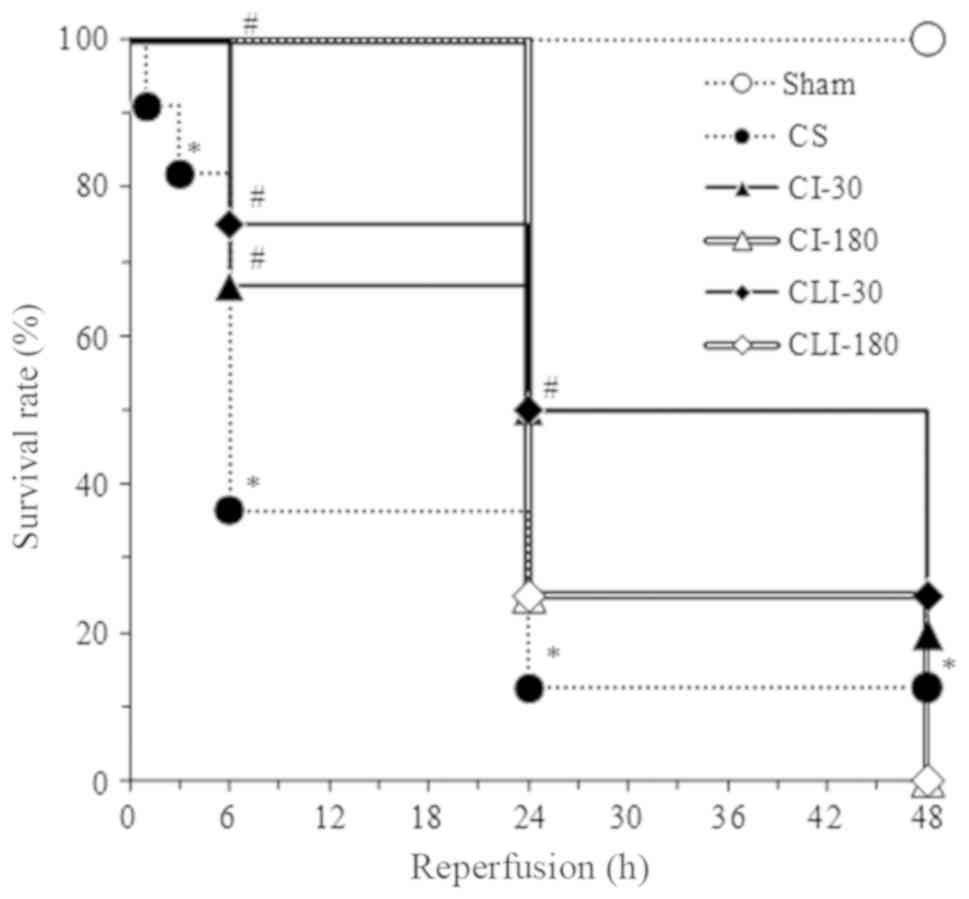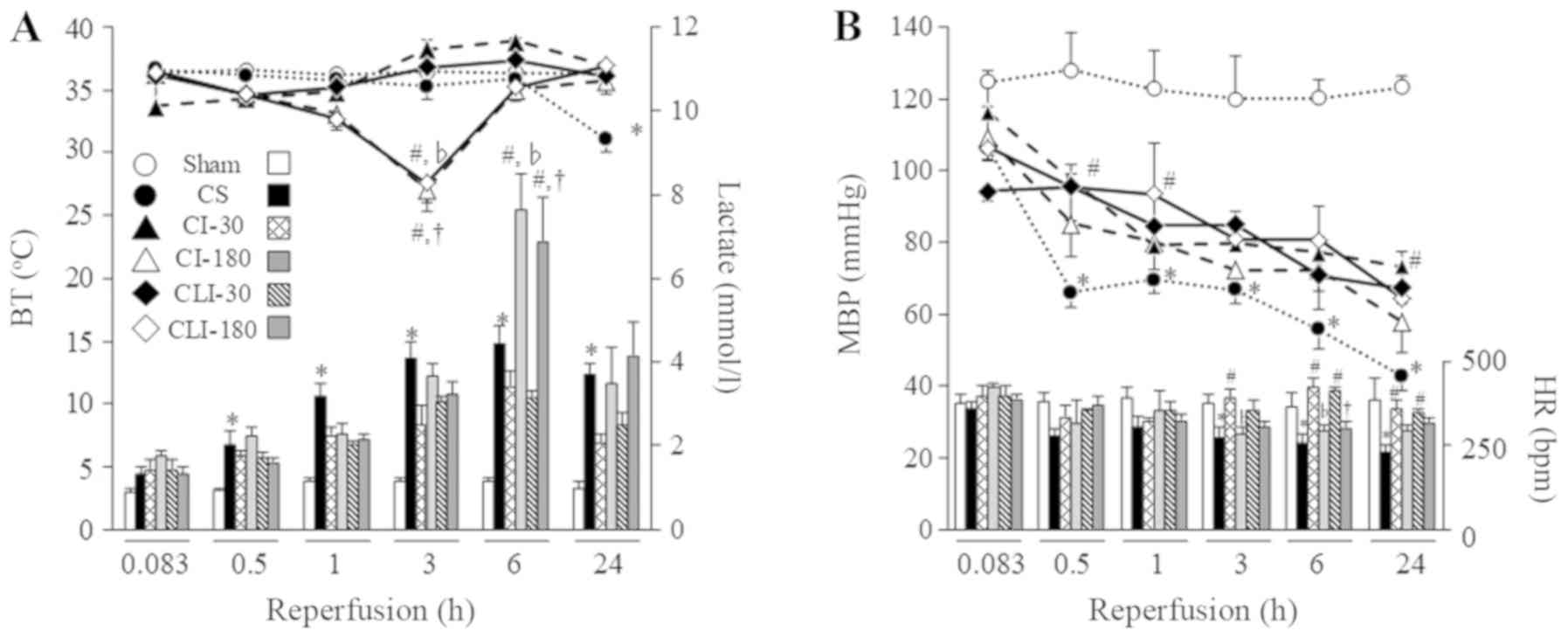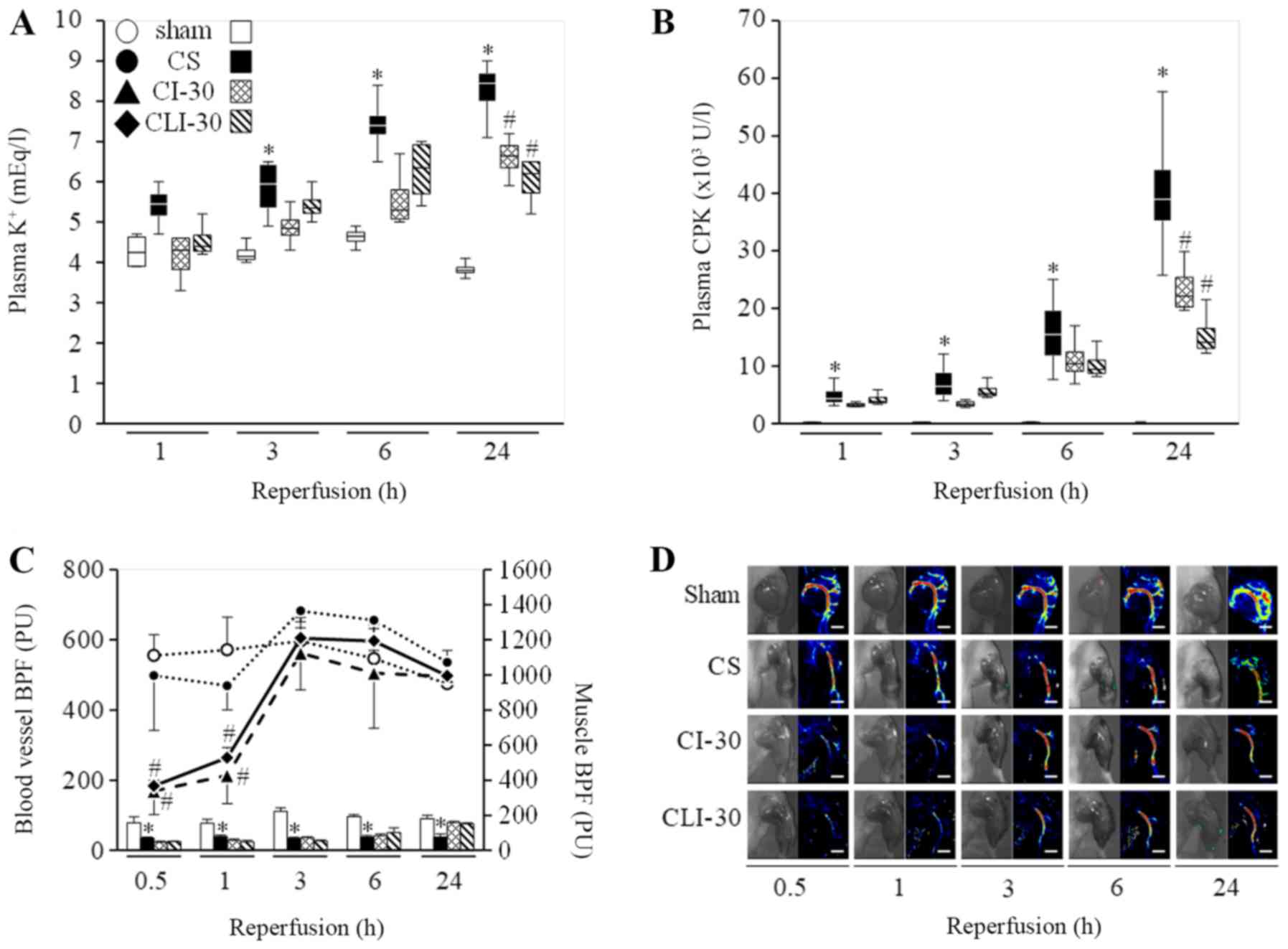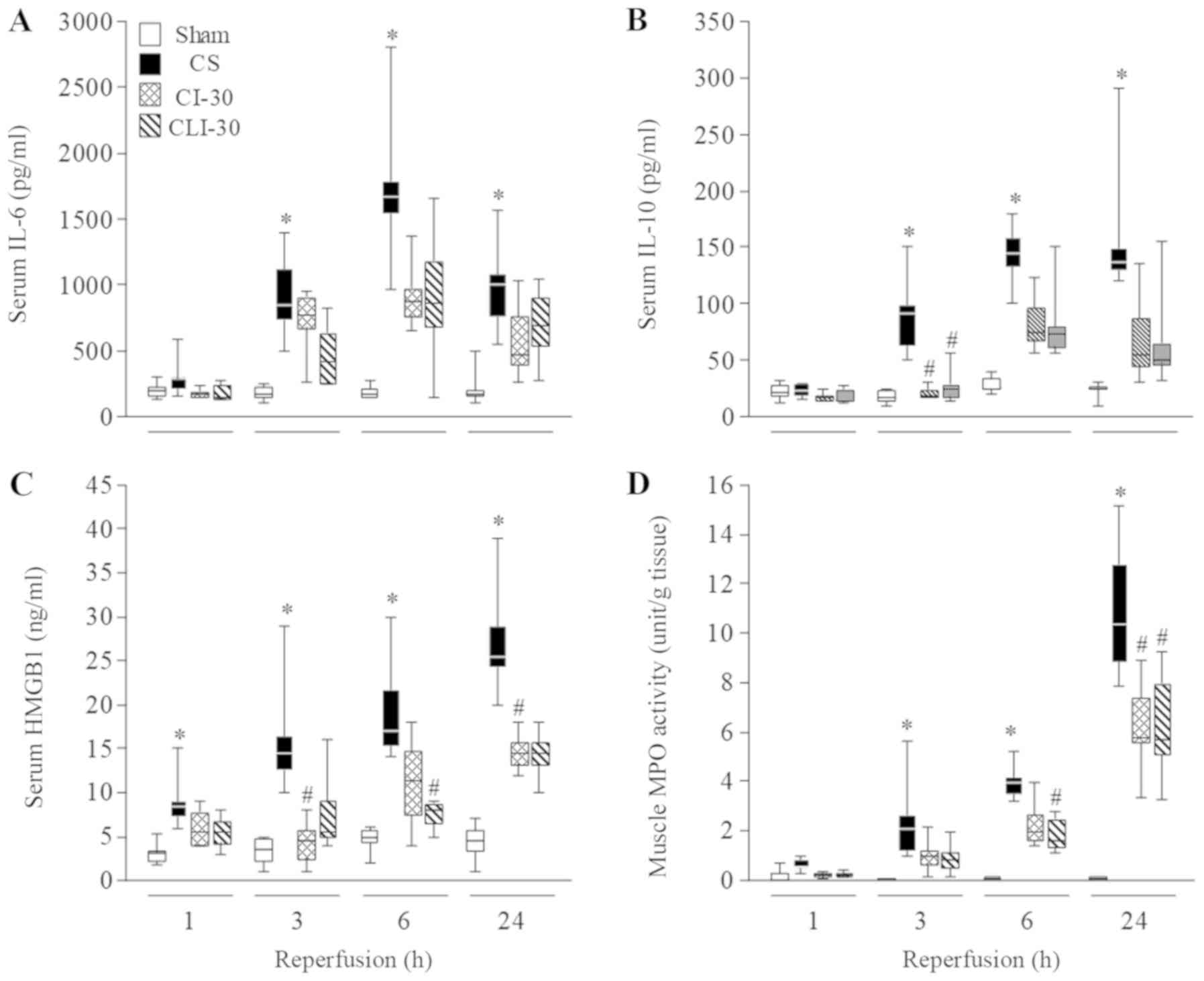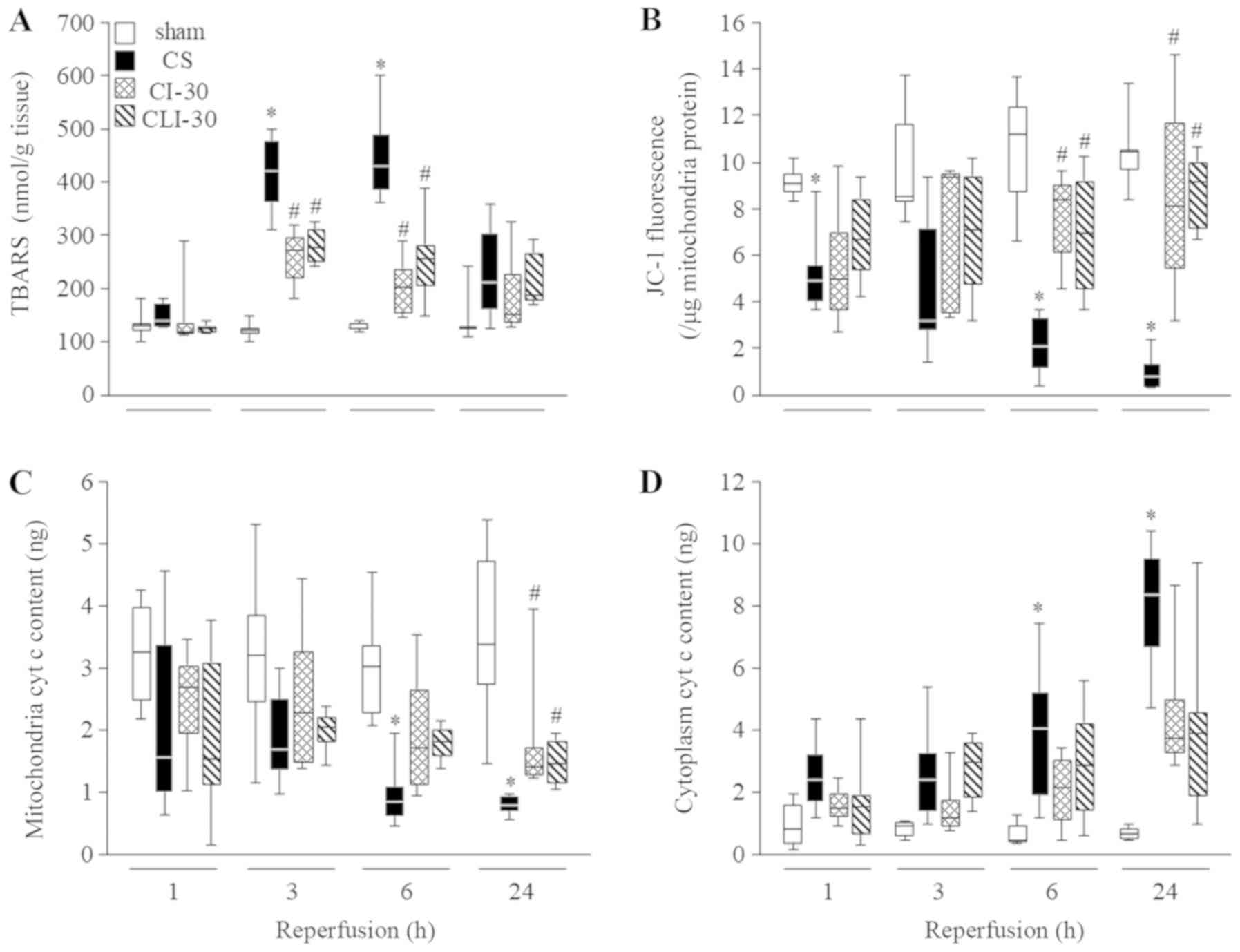|
1
|
Smith J and Greaves I: Crush injury and
crush syndrome: A review. J Trauma. 54((5 Suppl)): S226–S230.
2003.PubMed/NCBI
|
|
2
|
Sever MS and Vanholder R; RDRTF of ISN
Work Group on Recommendations for the Management of Crush Victims
in Mass Disasters, : Recommendation for the management of crush
victims in mass disasters. Nephrol Dial Transplant. 27 (Suppl
1):i1–i67. 2012. View Article : Google Scholar : PubMed/NCBI
|
|
3
|
Gonzalez D: Crush syndrome. Crit Care Med.
33((1 Suppl)): S34–S41. 2005. View Article : Google Scholar : PubMed/NCBI
|
|
4
|
Ashkenazi I, Isakovich B, Kluger Y, Alfici
R, Kessel B and Better OS: Prehospital management of earthquake
casualties buried under rubble. Prehosp Disaster Med. 20:122–133.
2005. View Article : Google Scholar : PubMed/NCBI
|
|
5
|
Murata I, Ooi K, Sasaki H, Kimura S,
Ohtake K, Ueda H, Uchida H, Yasui N, Tsutsui Y, Yoshizawa N, et al:
Characterization of systemic and histologic injury after crush
syndrome and intervals of reperfusion in a small animal model. J
Trauma. 70:1453–1463. 2011. View Article : Google Scholar : PubMed/NCBI
|
|
6
|
Murata I, Abe Y, Yaginuma Y, Yodo K,
Kamakari Y, Miyazaki Y, Baba D, Shinoda Y, Iwasaki T, Takahashi K,
et al: Astragaloside-IV prevents acute kidney injury and
inflammation by normalizing muscular mitochondrial function
associated with a nitric oxide protective mechanism in crush
syndrome rats. Ann Intensive Care. 7:902017. View Article : Google Scholar : PubMed/NCBI
|
|
7
|
Tiidus PM: Alternative treatments for
muscle injury: Massage, cryotherapy, and hyperbaric oxygen. Curr
Rev Musculoskelet Med. 8:162–167. 2015. View Article : Google Scholar : PubMed/NCBI
|
|
8
|
Merrick MA, Rankin JM, Andres FA and
Hinman CL: A preliminary examination of cryotherapy and secondary
injury in skeletal muscle. Med Sci Sports Exerc. 31:1516–1521.
1999. View Article : Google Scholar : PubMed/NCBI
|
|
9
|
Jahandiez V, Cour M, Bochaton T, Abrial M,
Loufouat J, Gharib A, Varennes A, Ovize M and Argaud L: Fast
therapeutic hypothermia prevents post-cardiac arrest syndrome
through cyclophilin D-mediated mitochondrial permeability
transition inhibition. Basic Res Cardiol. 112:352017. View Article : Google Scholar : PubMed/NCBI
|
|
10
|
Singh DP, Barani Lonbani Z, Woodruff MA,
Parker TJ, Steck R and Peake JM: Effects of topical icing on
inflammation, angiogenesis, revascularization, and myofiber
regeneration in skeletal muscle following contusion injury. Front
Physiol. 8:932017. View Article : Google Scholar : PubMed/NCBI
|
|
11
|
Takagi R, Fujita N, Arakawa T, Kawada S,
Ishii N and Miki A: Influence of icing on muscle regeneration after
crush injury to skeletal muscles in rats. J Appl Physiol (1985).
110:382–388. 2011. View Article : Google Scholar : PubMed/NCBI
|
|
12
|
Meeusen R and Lievens P: The use of
cryotherapy in sports injuries. Sports Med. 3:398–414. 1986.
View Article : Google Scholar : PubMed/NCBI
|
|
13
|
Swenson C, Swärd L and Karlsson J:
Cryotherapy in sports medicine. Scand J Med Sci Sports. 6:193–200.
1996. View Article : Google Scholar : PubMed/NCBI
|
|
14
|
Alegre LM, Hasler M, Wenger S, Nachbauer W
and Csapo R: Does knee joint cooling change in vivo patellar tendon
mechanical properties? Eur J Appl Physiol. 116:1921–1929. 2016.
View Article : Google Scholar : PubMed/NCBI
|
|
15
|
Warren TA, McCarty EC, Richardson AL,
Michener T and Spindler KP: Intra-articular knee temperature
changes: Ice versus cryotherapy device. Am J Sports Med.
32:441–445. 2004. View Article : Google Scholar : PubMed/NCBI
|
|
16
|
Dewhurst S, Macaluso A, Gizzi L, Felici F,
Farina D and De Vito G: Effects of altered muscle temperature on
neuromuscular properties in young and older women. Eur J Appl
Physiol. 108:451–458. 2010. View Article : Google Scholar : PubMed/NCBI
|
|
17
|
Nakayama T, Fujita M, Ishihara M, Ishihara
M, Ogata S, Yamamoto Y, Shimizu M, Maehara T, Kanatani Y and
Tachibana S: Improved survival rate by temperature control at
compression sites in rat model of crush syndrome. J Surg Res.
188:250–259. 2014. View Article : Google Scholar : PubMed/NCBI
|
|
18
|
Merrick MA: Secondary injury after
musculoskeletal trauma: A review and update. J Athl Train.
37:209–217. 2002.PubMed/NCBI
|
|
19
|
Deal DN, Tipton J, Rosencrance E, Curl WW
and Smith TL: Ice reduces edema. A study of microvascular
permeability in rats. J Bone Joint Surg Am. 84:1573–1578. 2002.
View Article : Google Scholar : PubMed/NCBI
|
|
20
|
Tidball JG and Wehling-Henricks M: Damage
and inflammation in muscular dystrophy: Potential implications and
relationships with autoimmune myositis. Autoimmune myositis. Curr
Opin Rheumatol. 17:707–713. 2005. View Article : Google Scholar : PubMed/NCBI
|
|
21
|
Barnett A: Using recovery modalities
between training sessions in elite athletes: Does it help? Sports
Med. 36:781–796. 2006. View Article : Google Scholar : PubMed/NCBI
|
|
22
|
Murata I, Ooi K, Shoji S, Motohashi Y, Kan
M, Ohtake K, Kimura S, Ueda H, Nakano G, Sonoda K, et al: Acute
lethal crush-injured rats can be successfully rescued by a single
injection of high-dose dexamethasone through a pathway involving
PI3K-Akt-eNOS signaling. J Trauma Acute Care Surg. 75:241–249.
2013. View Article : Google Scholar : PubMed/NCBI
|
|
23
|
Scaffidi P, Misteli T and Bianchi ME:
Release of chromatin protein HMGB1 by necrotic cells triggers
inflammation. Nature. 418:191–195. 2002. View Article : Google Scholar : PubMed/NCBI
|
|
24
|
Lotze MT and Tracey KJ: High-mobility
group box 1 protein (HMGB1): Nuclear weapon in the immune arsenal.
Nat Rev Immunol. 5:331–342. 2005. View
Article : Google Scholar : PubMed/NCBI
|
|
25
|
Wang H, Bloom O, Zhang M, Vishnubhakat JM,
Ombrellino M, Che J, Frazier A, Yang H, Ivanova S, Borovikova L, et
al: HMG-1 as a late mediator of endotoxin lethality in mice.
Science. 285:248–251. 1999. View Article : Google Scholar : PubMed/NCBI
|
|
26
|
Huang CH, Tsai MS, Chiang CY, Su YJ, Wang
TD, Chang WT, Chen HW and Chen WJ: Activation of mitochondrial
STAT-3 and reduced mitochondria damage during hypothermia treatment
for post-cardiac arrest myocardial dysfunction. Basic Res Cardiol.
110:592015. View Article : Google Scholar : PubMed/NCBI
|
|
27
|
Tissier R, Chenoune M, Pons S, Zini R,
Darbera L, Lidouren F, Ghaleh B, Berdeaux A and Morin D: Mild
hypothermia reduces per-ischemic reactive oxygen species production
and preserves mitochondrial respiratory complexes. Resuscitation.
84:249–255. 2013. View Article : Google Scholar : PubMed/NCBI
|
|
28
|
Yang X, Liu Y, Yang XM, Hu F, Cui L,
Swingle MR, Honkanen RE, Soltani P, Tissier R, Cohen MV and Downey
JM: Cardioprotection by mild hypothermia during ischemia involves
preservation of ERK activity. Basic Res Cardiol. 106:421–430. 2011.
View Article : Google Scholar : PubMed/NCBI
|
|
29
|
Yenari MA and Han HS: Neuroprotective
mechanisms of hypothermia in brain ischemia. Nat Rev Neurosci.
13:267–278. 2012. View Article : Google Scholar : PubMed/NCBI
|
|
30
|
Zhao H, Shimohata T, Wang JQ, Sun G,
Schaal DW, Sapolsky RM and Steinberg GK: Akt contributes to
neuroprotection by hypothermia against cerebral ischemia in rats. J
Neurosci. 25:9794–9806. 2005. View Article : Google Scholar : PubMed/NCBI
|
|
31
|
Alam MR, Baetz D and Ovize M: Cyclophilin
D and myocardial ischemia-reperfusion injury: A fresh perspective.
J Mol Cell Cardiol. 78:80–89. 2015. View Article : Google Scholar : PubMed/NCBI
|
|
32
|
Baines CP, Kaiser RA, Purcell NH, Blair
NS, Osinska H, Hambleton MA, Brunskill EW, Sayen MR, Gottlieb RA,
Dorn GW, et al: Loss of cyclophilin D reveals a critical role for
mitochondrial permeability transition in cell death. Nature.
434:658–662. 2005. View Article : Google Scholar : PubMed/NCBI
|
|
33
|
Bochaton T, Crola-Da-Silva C, Pillot B,
Villedieu C, Ferrera L, Alam MR, Thibault H, Strina M, Gharib A,
Ovize M and Baetz D: Inhibition of myocardial reperfusion injury by
ischemic postconditioning requires sirtuin 3-mediated deacetylation
of cyclophilin D. J Mol Cell Cardiol. 84:61–69. 2015. View Article : Google Scholar : PubMed/NCBI
|
|
34
|
Liu J, Wang Y, Zhuang Q, Chen M, Wang Y,
Hou L and Han F: Protective effects of cyclosporine A and
hypothermia on neuronal mitochondria in a rat asphyxial cardiac
arrest model. Am J Emerg Med. 34:1080–1085. 2016. View Article : Google Scholar : PubMed/NCBI
|
|
35
|
Patil KD, Halperin HR and Becker LB:
Cardiac arrest: Resuscitation and reperfusion. Circ Res.
116:2041–2049. 2015. View Article : Google Scholar : PubMed/NCBI
|















